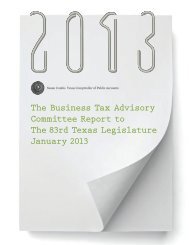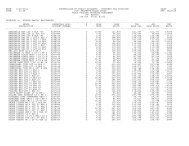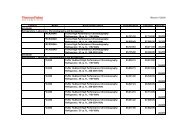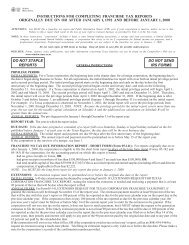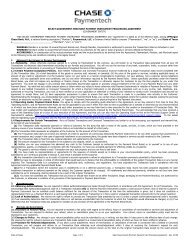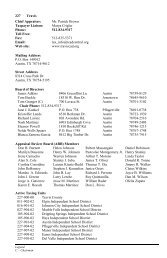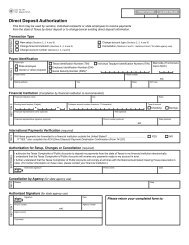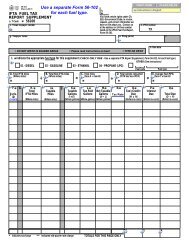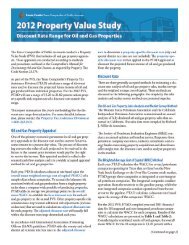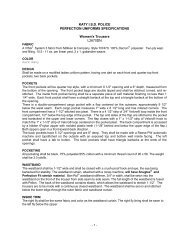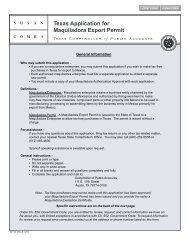Contracts Management Guide - Texas Comptroller of Public Accounts
Contracts Management Guide - Texas Comptroller of Public Accounts
Contracts Management Guide - Texas Comptroller of Public Accounts
You also want an ePaper? Increase the reach of your titles
YUMPU automatically turns print PDFs into web optimized ePapers that Google loves.
Contract Manager Responsibilities<br />
The primary responsibilities <strong>of</strong> the contract manager are:<br />
• Participating, as necessary, in developing the solicitation and writing the draft documents. Contract administration<br />
must be considered during this process.<br />
• Monitoring the contractor’s progress and performance to ensure goods and services conform to the contract<br />
requirements.<br />
• Managing any state property used in contract performance.<br />
• Authorizing payments consistent with the contract terms.<br />
• Exercising state remedies, as appropriate, where a contractor’s performance is deficient.<br />
• Resolving disputes in a timely manner.<br />
• Documenting significant events.<br />
• Maintaining appropriate records.<br />
The number <strong>of</strong> participants in the contract administration process will vary in number from one to many depending<br />
on the size, level <strong>of</strong> risk and complexity <strong>of</strong> the contract. Early in the procurement process, identify staff to participate<br />
in contract management. Identify a single contract manager and others to assist the contract manager. Assign roles<br />
and responsibilities which may include:<br />
• Determining the sequence <strong>of</strong> activities, dependencies, required or desired outcomes, and acceptable<br />
performance levels.<br />
• Developing a timetable and start and end date for each performance component. Include milestones with<br />
accompanying timeframes, and monitoring and reporting requirements.<br />
• Monitoring contractor activity on a specified frequency to identify problem areas.<br />
• Meeting with the contractor on a regular basis to review progress, discuss problems and consider necessary<br />
changes.<br />
• Providing access to state facilities, equipment, data, staff, materials and information.<br />
• Contacting other staff as necessary to provide equipment and data.<br />
• Establishing scope <strong>of</strong> authority, clear lines <strong>of</strong> communication and reporting and specific individuals who will<br />
interact directly with the contractor.<br />
• Establishing control <strong>of</strong> correspondence, data and reports.<br />
• Identifying potential problems and solutions.<br />
• Defining terms or conditions <strong>of</strong> default.<br />
• Establishing a procedure, identifying a responsible person and establishing a timeframe for handling noncompliance.<br />
59



